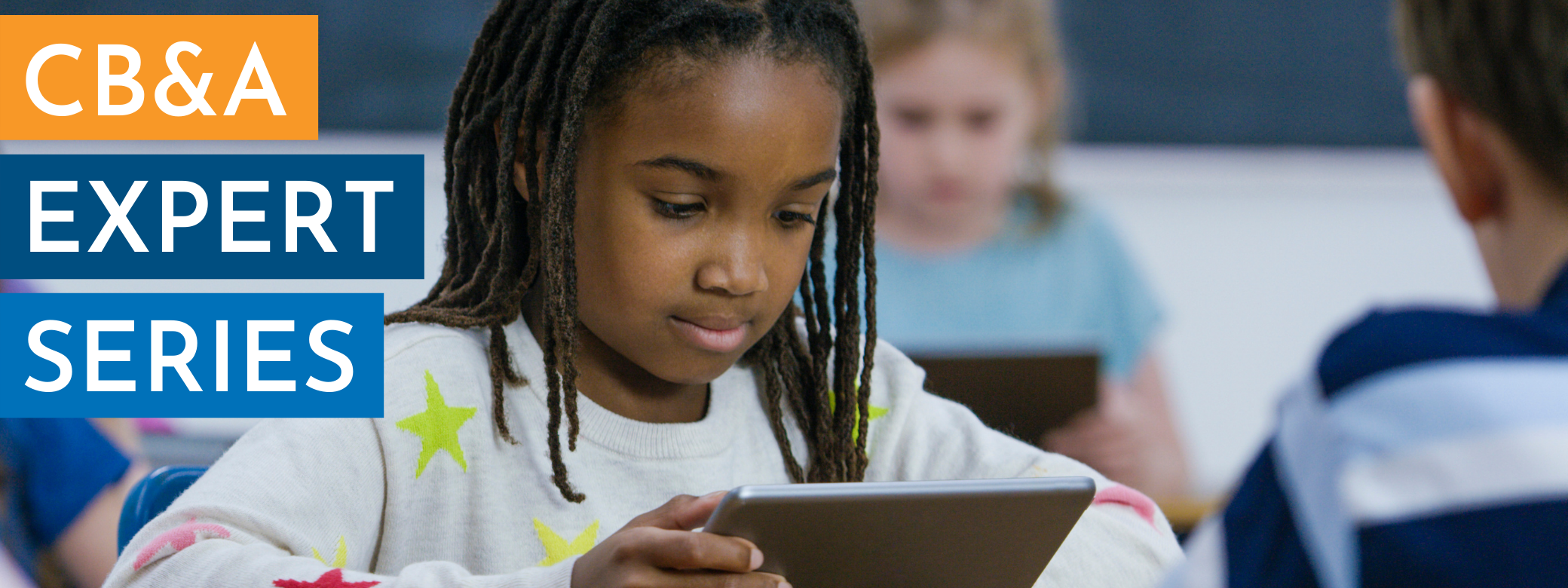

The sudden shift to remote and digital learning during the pandemic has changed so much within K-12 education. In turn, this has created new opportunities for education marketers to engage with customers and prospects and help them navigate these changes successfully.
What should companies that sell to education know about these changes, and where do the biggest opportunities lie?
Julie Evans, CEO of the national nonprofit organization Project Tomorrow, shared her thoughts about this topic in a recent CB&A Expert Series webinar. For nearly 20 years, Project Tomorrow’s annual Speak Up survey has polled K-12 students, parents, teachers and administrators to gauge their views on educational technology, school climate, the future of learning and more.
View the Webinar: 5 Essential Truths about EdTech in Schools Today
During the event, Evans revealed findings from her organization’s research that have important implications for business-to-education (B2E) marketers. Based on her insights, here are three key opportunities for B2E marketers to seize upon in 2022 and beyond.
Help K-12 leaders understand edtech’s true value beyond student engagement.
For years, educators have cited student engagement as one of the top benefits of using technology for instruction. Even though education marketers have been talking about other benefits for a long time, the message largely hasn’t gotten through to K-12 buyers.
And yet, students have understood the full range of benefits all along. “When we ask sixth graders, ‘What is the value of digital learning,’ they don’t talk about how they’re more engaged in learning,” Evans explained.
Instead, they talk about benefits such as better academic outcomes, 21st century skills development and agency over their own learning, such as the ability to learn at their own pace and create sophisticated projects.
In light of the experiences they’ve had during the pandemic, K-12 leaders now seem more receptive to thinking about technology as much more than just a student engagement tool.
“We’ve been talking about the value proposition for edtech (for many years), but the window was not open before to really help leaders understand what this means,” Evans said. “That window is open now, and they are looking for help. We have an opportunity to rebrand the value of digital learning.”
Help K-12 leaders connect the dots between products and outcomes.
School and district leaders are more knowledgeable about technology today, by virtue of having access to so many more digital products. For instance, many companies offered their products free of charge during the early stages of the pandemic. This exposure has increased K-12 leaders’ knowledge about what products they liked, didn’t like, needed and didn’t need. As a result, their idea of efficacy has become more sophisticated as well.
Efficacy is closely linked to how effectively technology is used for instruction. Yet, effectiveness is still not fully realized in most classrooms.
“One of the things we’ve learned is that high usage of digital tools and resources (during the pandemic) did not mean they were being used effectively,” Evans said. “We also learned that teachers are not yet ready for the type of seamless edtech integration that we’ve all been talking about for so long. They weren’t ready prior to the pandemic, and they still have a long way to go to understand how to use this technology effectively.”
When talking with school and district leaders, B2E marketers have to make explicit connections between their products and intended outcomes. “Leaders aren’t necessarily going to understand how using technology will help them achieve their goals,” Evans said. “You have to show them. Leaders have a higher bar for what they’re looking for today.”
Help K-12 leaders expand their idea of equity in education.
Whether their schools are providing equitable learning opportunities for all children is a top-of-mind issue for most educators today, Evans said, and that’s true across all types of communities that Project Tomorrow has polled—including large, urban school systems and small, rural ones.
“But here’s the problem,” she said. “For too long, we have not fully defined what we mean by equity in education.”
Equity of access to computers and other digital resources is something that everyone understands, and the data show that schools are making great strides in this area: In the 2018-19 school year, only four in 10 principals said their 1:1 learning program allowed students to take devices home and 50 percent said they had no plans to allow that. In 2020-21, nine in 10 principals said they’re providing devices for students to learn both in school and at home—and 75 percent have Wi-Fi hotspot loaner programs.
However, equity also means fairness in the quality of the learning experiences that students have access to, the support they get at school and the agency they have over their own learning, Evans observed.
For instance, the 2020-21 Speak Up data revealed that while 53 percent of teachers in urban schools feel comfortable engaging with students who are learning online, just 38 percent of teachers in rural schools feel that way. And while 58 percent of students in grades 6-8 who attend schools with mostly white students feel safe at school, only 45 percent of their peers attending schools with mostly students of color feel secure.
“These are conversations we should be having as well,” Evans noted. Why do these disparities exist—and how can your products help K-12 leaders address them?
You can watch the full webinar with Julie Evans here. Learn how CB&A can help you achieve your education sales and marketing goals here.
